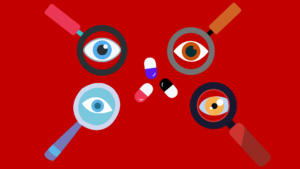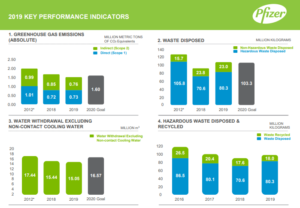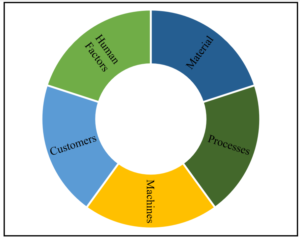The latest challenges to the pharma industry are patent expirations, counterfeiting, product quality issues, and the aftermath of the coronavirus pandemic.
We bring to you the latest operational excellence trends using which you can deal with these challenges. If integrated effectively, you will be 2 steps ahead of all competitors.
With modern-day technology and rapidly transitioning business models, it is often exhausting to balance cost-cuts with product quality, as every pharma company is constantly upgrading itself. Chances are that once you figure out how to cut costs while maintaining the same efficiency in manufacturing the products, your competitor has already figured out how to integrate the latest technology in increasing their manufacturing units while reducing the cost price.
Challenges that Pharmaceutical Companies are Facing Right Now
Manufacturing the latest vaccines and developing new compounds for medicines is the need of the hour. However, the main challenge of 2020 and 2021 will be to place your company in a position where manufacturing these goods will be a necessity due to an active consumer base. Let us take a look at what stepping stones await in the next few months, and how effective integration of operational excellence can help tackle them:
COVID Pandemic taking over the company’s operations
With the current covid-19 pandemic dominating global businesses, pharmaceutical companies in particular will be tasked with facing the challenge of collaborating with other partners in order to multiply research efforts and contain the situation . Additionally, focus is gradually shifting from cures to preventive measures – i.e. the wave of vaccination-demands is rising from both the customers as well as the government, as a model for cost-effective productivity.
Customer Expectations
 The active scrutinization by customers regarding the available pharmaceutical products is one of the most significant changes that the pharmaceutical world has ever witnessed. Today, customers are actively involved in assessing the results of clinical trials, rely on empirical evidence and hard, cold data with regard to the purchase and consumption of medicines from drug stores. So simply manufacturing drugs and making them widely available to the markets will not be enough for companies – data must be imparted within and outside of the company.
The active scrutinization by customers regarding the available pharmaceutical products is one of the most significant changes that the pharmaceutical world has ever witnessed. Today, customers are actively involved in assessing the results of clinical trials, rely on empirical evidence and hard, cold data with regard to the purchase and consumption of medicines from drug stores. So simply manufacturing drugs and making them widely available to the markets will not be enough for companies – data must be imparted within and outside of the company.
Digitization of User-Experience and Marketing
 The current pandemic scenario has shifted the acquisition of fast-moving consumer goods to the digital platform via online shopping of pharma products. To keep up with this major paradigm shift, pharmaceutical companies must digitize their operations and retails markets, thereby making mass medicine available online via pharmaceutical websites and providing a higher degree of accessibility for customers. To cater to this audience, digital marketing is of extreme importance, as it expands marketing operations and visibility of the brand and products. With visibility comes opportunity, and with opportunity comes demand.
The current pandemic scenario has shifted the acquisition of fast-moving consumer goods to the digital platform via online shopping of pharma products. To keep up with this major paradigm shift, pharmaceutical companies must digitize their operations and retails markets, thereby making mass medicine available online via pharmaceutical websites and providing a higher degree of accessibility for customers. To cater to this audience, digital marketing is of extreme importance, as it expands marketing operations and visibility of the brand and products. With visibility comes opportunity, and with opportunity comes demand.
AI and Robotics
The primary concern of technology today is to decrease production time and costs, increase manufacturing speed, and integrate efficient production runs. The salience of adapting to automated machines and specialized task forces and artificial intelligence cannot be understated, if pharmaceutical companies are to stay in the race of global market expansion.
Demand Prediction
Pharmaceutical companies must trace consumer patterns and utilize healthcare data analytics in order to stay ahead of the curve, effectively match the demands of the market and produce an optimal amount of goods within a predetermined time . Assessing pricing structures and increasing revenues should be the primary concern for companies today.
By the implementation of analytics and various methodologies, operational excellence tackles these challenges – all of which aim to increase the likelihood of an enhanced production cycle and sustainable development. These tools of enhancement of organizational culture include lean manufacturing/ lean, Six Sigma, kaizen – and recently, an integrated approach called the lean Six Sigma
| Methodologies | How it functions in the Pharmaceutical Industry |
| Lean Manufacturing | By eliminating waste production from the manufacturing domain which do not add value to production, time and expenses are saved. In light of the global shift in focus towards eco-friendly manufacturing processes and environmental responsibility and accountability, pharmaceutical companies are adopting zero-waste strategies to eliminate waste and excess production of consumer goods. |
| Six Sigma | Six Sigma (proposed by Motorola employee Bill Smith in the 1980s) is a set of statistical tools and data analytics which link customer satisfaction to the measure of product quality. It analyses data and interprets it such that in effect, a maximum of 3.4 faults per million units can be made by a company’s production unit (Bicheno, 2006). In the pharmaceutical industry, this can be used to apply statistical evaluations of clinical drug trials – thereby making success-rate data available to the consumers as well as building upon improvement techniques. |
| Kaizen | With regulatory compliance and call for quality being the foremost priority of consumers, pharmaceutical companies have been adopting kaizen – which breaks down complex processes into smaller, simpler and manageable units, and then focuses on improving them separately. This eventually leads to enhancement of the entire unit as a whole over a period of time and ensures long-term improvement. It prioritizes continuous improvement among employees and streamline processes. The R&D, manufacturing, and distributing domains have all significantly improved in productivity, as pharmaceutical companies are increasingly introducing more generic drugs in the market at reduced prices. |
| Lean Six Sigma | It is an integrated approach combining both Lean and Six Sigma. It focuses on enhancing the value and quality of products and decreasing production time via minimizing waste of products. Essentially, it combines both operational excellence methodologies and paves the path for a simpler chronological approach to information flow, as well as organizing data for faster interpretation – both of which are essential areas for pharmaceutical industries. |
What Trends Should we be on the Lookout for?
Synthesizing the challenges faced by the pharmaceutical industry today along with the need for integration of operational excellence methodologies, identification of the trends that are currently present as well those which are yet to blanket the market. Operational excellence answers all questions regarding company productivity, product quality, manufacturing and delivery processes, customer satisfaction, organizational culture, and myriad other aspects. For instance, it aids R&D via streamlining budgets, prioritizing which drugs are in high demand etc.
To keep up with the competitive pharmaceutical market, digitization prompts and the effects of the covid-19 pandemic, the following trends are the ones that companies need to be on the lookout for to increase net revenue and operational discipline.
Interactive Visual Intelligence – let you customers be your analyst

Excerpt of the publicly available dashboard of Pfizer(American Multinational Pharmaceutical Company), 2019.
With customers scrutinizing drugs and their effectiveness based on empirical evidence, dashboards provide an effective business analytics tool of communicating visual data and statistics to the mass via simple and easy-to-comprehend graphs. They represent a company’s monitoring process of quality control measures, R&D findings, results from clinical trials, etc. These provide the ultimate goal for trust-building between pharmaceutical companies and their buyers – TRANSPARENCY . Empirical trust is what makes or breaks a company’s sales, and this is where dashboards save the day. Data from numerous domains of the company may be combined into a single and legible demonstration of pharmaceutical data for employees and customers. In terms of internal production, dashboards provide invaluable time-saving insight into analyzing production costs, decision-making results and sales performances. This instigates the necessary changes toward growth. Disclosure is everything in today’s world.
Using Cognitive Computing to Influence Cognition
With the focal point of Kaizen and Six Sigma being customer satisfaction, their latest trends with regard to the biotechnology and pharmaceutical industry are tilting toward the integration of artificial intelligence.
 These include incorporating conversation chatbots and digital assistants in company websites in order to personalize the experience of medicine consumerism of users, to provide them with relevant and appropriate interaction, and enable customized patient treatment and tracking. This increase in user friendliness will contribute to the six sigma analytics by recording current customer buying patterns and real-time needs which need to be matched by a company’s production units.
These include incorporating conversation chatbots and digital assistants in company websites in order to personalize the experience of medicine consumerism of users, to provide them with relevant and appropriate interaction, and enable customized patient treatment and tracking. This increase in user friendliness will contribute to the six sigma analytics by recording current customer buying patterns and real-time needs which need to be matched by a company’s production units.
Predictive Modelling
Artificial Intelligence algorithms and IT analytics are focusing toward implementing predictive modelling in order to anticipate the occurrence of an epidemic, in order to prevent another corona virus pandemic. These algorithms sort through global online content and news media in order to identify patterns, which in turn, helps in the production of vaccines and preventive medications.
ProdEX Method
The ProdEX method has been adopted by Vetter (a German contract manufacturer for pharmaceutical companies) which aims at targeting 5 factors for producing high quality pharmaceuticals via optimal manufacturing power, streamlined processes, fulfil customer expectation and meet the standards of regulatory bodies.
 This model satisfies every aspect of practical operational excellence management. Buerkle (2019) notes that implementation of the ProdEX method at Vetter significantly reduced waste production, adjusted “micro malfunctions” thereby decreasing “downtime”, and reducing the probability of human error occurrence. This is what pharmaceutical companies need to adapt to today.
This model satisfies every aspect of practical operational excellence management. Buerkle (2019) notes that implementation of the ProdEX method at Vetter significantly reduced waste production, adjusted “micro malfunctions” thereby decreasing “downtime”, and reducing the probability of human error occurrence. This is what pharmaceutical companies need to adapt to today.
Paradigm shift from Achievement to Process
Pharmaceutical companies such as Pfizer and BioNTech, and Moderna, are already talking about releasing their Covid-19 vaccine. What’s helping them get ahead in the race? Gradually, pharmaceutical companies are shifting their focus from the attainment of operational excellence to the process of attaining it – which is to say that continuous improvement and implementation of kaizen in workplace culture, structure, and employee morale and behavior are the latest focal points. Most researches and companies have highlighted that the implementation of operational excellence is only as successful as the company’s leadership and management. Therefore, these building-block aspects of your company must be enhanced and worked upon if sustainable and transformational change of operational excellence is to be implemented effectively.
Streamlining Operations
Simplification of work-related tasks and eliminating excess data are the need of the hour if a greater degree of efficiency within the organization is to be achieved. Streamlining operations which look into audit plans also provide a greater degree of compliance to regulatory bodies – which are much more stringent today than ever, with restrictions and stricter rules in manufacturing medicine, retail storage and transfer of drugs. Monitoring the production of pharmaceuticals and their offsets nee d to be done in order to meet regulatory guidelines.
What’s the Next Step?
The first step is to evaluate exactly where a company stands with regard to operations, manufacturing units, financial records etc. Create a dashboard of the company’s current standing.

This will help in providing customers with updated information of company records and help the management re-evaluate its position. From here onwards, implementing change and incorporating tools of operational excellence will be much easier.
“Global pharma spending will hit $1.5 trillion in 2023”
This is the hike which IQVIA Institute projected in 2018.
It is what your future may look like if your company hitches a ride on the latest trends of the Operational Excellence express
